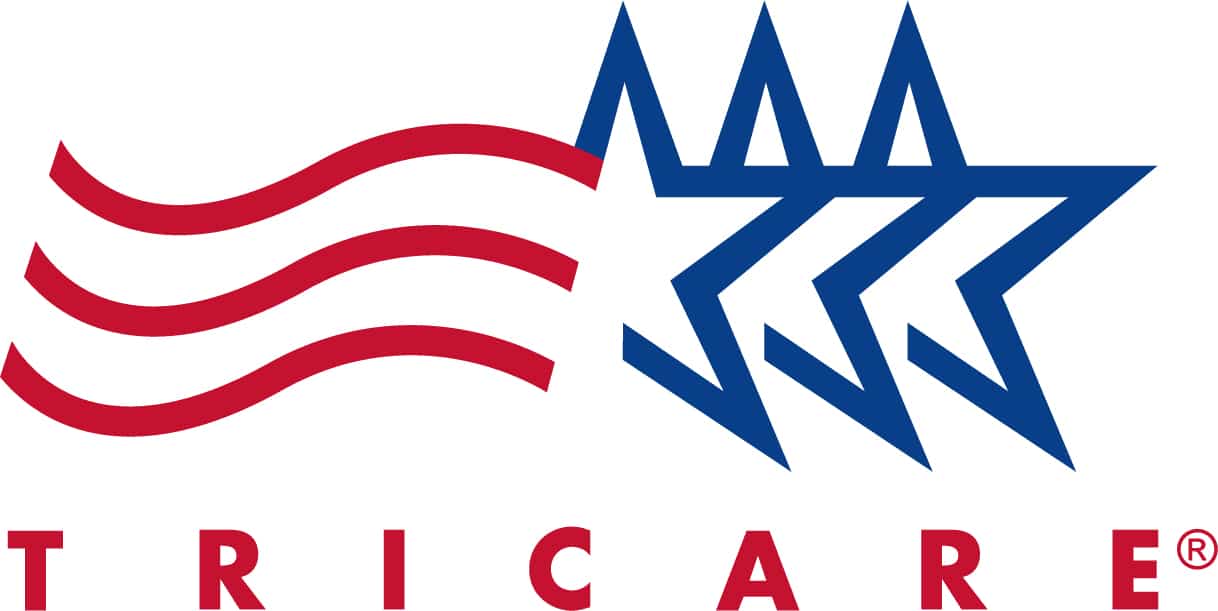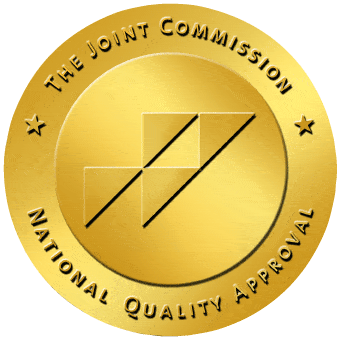Ativan Addiction Treatment

Ativan Addiction Treatment
Introduction
A history of alcohol or drug abuse
An untreated mental health disorder
Someone struggling with an addiction to Ativan must deal with cravings. When dealing with addiction, it’s common to continue to abuse the substance, despite the social problems it causes. These problems can include social isolation and issues with family, friends, and work. Addiction also frequently leads to financial burden.
Those who use Ativan can find they need more to produce an effect, meaning tolerance has developed. Symptoms of withdrawal can make it difficult to quit using the drug. Let’s look more closely now at Ativan addiction and treatment that can include therapy, rehab, and a medically assisted detox.
More About Benzodiazepines
How Ativan is Used
Ativan is an anti-anxiety medication. It is prescribed to treat panic attacks, short-term anxiety, and symptoms of depression. It is also prescribed to treat issues such as epilepsy and insomnia. Ativan can also be prescribed to manage withdrawal symptoms due to alcohol detoxification. Due to the high potency of Ativan, it is rarely prescribed for longer than a few months.1
Ativan works by blocking a neurotransmitter to slow hyperactive mental processes. The substance is typically sold as a quick-dissolve tablet. It can sometimes be found in a concentrated and colorless liquid. When prescribed, it is typically consumed orally. Only a healthcare professional can administer Ativan via IV drip. This is due to the high potential for abuse. It can take 20 to 100 hours for the drug to leave a person’s system. It can be given by mouth or as an injection into a vein or muscle.
The generic name for the brand name of Ativan is lorazepam. This benzodiazepine medication is not only used to treat anxiety disorders, insomnia, depression, and epilepsy; it is also prescribed to treat active seizures and chemotherapy-induced nausea and vomiting. Additional uses are:
To interfere with memory formation during surgery
To sedate someone who is mechanically ventilated
For acute coronary syndrome due to cocaine use
You might hear Ativan called heavenly blues, goofballs, stupefy, and benzos.
Ativan Abuse and Rising Overdose Rates
The National Institute of Drug Abuse (NIDA) reports that over 30 percent of drug overdoses today that involve opioids also involve benzodiazepines; including Ativan. These “benzos” are prescribed to treat anxiety or insomnia as they calm or sedate a person. This sedation can make opioids more dangerous to use. Other than Ativan, “benzos” include Valium, Xanax, and Klonopin.
More Prescriptions Than Ever
Between 1996 and 2013:
The number of adults who filled a benzodiazepine prescription increased by 67% from 8.1 million to 13.5 million.
The quantity of “benzos” obtained also increased from 1.1 kg to 3.6 kg lorazepam-equivalents per 100,000 adults.
Combining Ativan with an Opioid can be Deadly
More than 115 Americans a day die after overdosing on opioids. Combining opioids and benzodiazepines is unsafe. Both types of drugs sedate a user and suppress breathing – the cause of an overdose fatality. Both types of drugs also impair cognitive functions.
In 2015, 23 percent of those who died of an opioid overdose also tested positive for benzodiazepines. People are prescribed both drugs at the same time in some cases. The percent of patients receiving an opioid prescription also prescribed benzos climbed to 17 percent in 2013 compared to 9 percent in 2001.
NIDA reports on a study showing those who are prescribed benzodiazepines and an opioid are at a higher risk of being admitted into a hospital for a drug-related emergency. Overdose death rates were ten times higher for those who receive both opioids and benzodiazepines compared to those who receive opioids alone. Overdose deaths in cases where people were prescribed opioids for non-cancer pain also tested positive for benzodiazepines in 60 percent of cases in a Canadian study.
Ativan Prescription Guidelines
Prescription Guidelines
In 2016, the Centers for Disease Control and Prevention (CDC) issued these guidelines for the prescribing of opioids:
Doctors should avoid prescribing benzodiazepines at the same time as opioids whenever possible.
Both prescription opioids and benzodiazepines now carry FDA warnings on the label highlighting the dangers of using these drugs together.
Patients prescribed any medications should inform their doctors about all other drugs and medications they use.
Patients should consult with their doctors about the potential dangers of using various medications and substances together, including the use of alcohol.
Ativan Side Effects
Side Effects
Common side effects of Ativan include the following:2
- Blurred vision
- Constipation
- Drowsiness
- Tiredness
- Muscle weakness
- Headache
- Sleep problems (insomnia)
- Loss of balance or coordination
- Forgetfulness or amnesia
- Difficulty concentrating
- Nausea
- Vomiting
- Changes in appetite
- Skin rash
Ativan Contraindications
Ativan can interact dangerously with the following:
- Alcohol
- Cold or allergy medicines
- Narcotics
- Sleeping pills
- Muscle relaxers
- Medicine for seizures
- Anti-anxiety medications
- Barbiturates
- MAO inhibitors
- Medicines to treat psychiatric disorders
- Antidepressants
Ativan and other benzodiazepines should be avoided during pregnancy. Abusing these substances during pregnancy has been associated with fetal damage and congenital malformations.
How Ativan Addiction Starts
Dependence and Tolerance
Physical dependence can occur when an individual takes certain types of drugs over lengthy periods of time.
When a person chronically uses or abuses certain drugs, the person becomes used to having the drug present and learns to function only when the drug is present.
A person’s system adjusts the release of neurotransmitters and hormones to account for the presence of the drug.
When a person stops taking a drug abruptly, the system produces physical withdrawal symptoms.
Ativan Addiction
Ativan is a Schedule IV drug as determined by the United States Drug Enforcement Administration. This indicates that Ativan has the potential for abuse and for the development of physical dependence as it is a drug that can produce a withdrawal syndrome when attempting to stop using it.3 Ativan withdrawal symptoms can start quickly after the last dose. Most acute side effects hit 3-4 days out.
Withdrawal
Withdrawal from Ativan can be dangerous and fatal. This is due to the potential of developing seizures during withdrawal. Note that there are typically two stages with Ativan withdrawal. These are the acute stage and the prolonged stage.
Withdrawal symptoms can start within 24 hours after the last dose. The average onset for withdrawal symptoms occurs within 3-4 days. Acute withdrawal can include increased blood pressure, increased heart rate, difficulty sleeping, and a rush of anxiety.
Acute Withdrawal
The symptoms of acute withdrawal include:
Anxiety
Headache
Tremors in the hands
Mood swings
Irritability
Abdominal cramps
Confusion
Sweating
Difficulty concentrating
Panic attacks
Nausea
Vomiting
Protracted Withdrawal
After the acute phase comes the protracted phase. This can last up to two weeks and longer for someone using a very high dose of Ativan. Symptoms can include:
Anxiety
Drug cravings
Headache
Vomiting
Nausea
Depression
Some individuals experience PAWS (post-acute withdrawal syndrome), which can last for months to years after discontinuing the use of Ativan. The symptoms can include mood swings and lack of motivation.
Duration and Intensity of Symptoms
Duration and intensity of symptoms vary from person to person and depends on several factors that include the dose and frequency of use.
Tolerance can develop quickly for a chronic user or abuser. Those who become dependent on Ativan typically take a dose higher than the daily recommended dose. The higher the dose and the more often it is taken, the longer and more intense are the withdrawal symptoms. How long the person is taking Ativan will also determine the duration and intensity of the withdrawal symptoms. Other factors to consider include:
History of addiction
Psychological makeup
Co-occuring mental health issues
Body composition
Withdrawal from Ativan can become more complicated when a person stops using other drugs that can involve physical dependence, including:
Alcohol
Narcotic pain medications
Other benzodiazepines
Sedatives
Medications That Can Assist With Ativan Withdrawal
Medical detox can assist with Ativan withdrawal symptoms that should be supervised by a physician. This can involve a slow tapering of the dose to minimize withdrawal symptoms. Medications can help with the process, namely:
Melatonin
This is a hormone that induces sleep.
Paxil
An antidepressant that can ease some of the symptoms and increase success rate during withdrawal.
Anticonvulsants
Prescribed for those who develop seizures during Ativan detox.
No specific medication is dedicated to treating Ativan withdrawal. Doctors can use a number of medications to address symptoms. One analysis determined that tapering during the withdrawal process can be effective.
Misconceptions about Ativan
Ativan Isn’t Addictive
False: Regular use of benzos can make the brain become dependent. Addiction then involves drug dependence and withdrawal symptoms. Addiction also involves a person who cannot control how often and how much they take of the drug. These drugs act on the pleasure centers of the brain and lead to addiction. 4
You Can Safely Detox at Home
False: Medical detox with supervision means avoiding the potential dangers of withdrawal symptoms. Medications can also help during this supervised approach with trained professionals. Trying to do this at home, without supervision, can cause major complications in recovery.
Rehab is Not Needed After Detox
False: Medications, support groups, and therapy all contribute to successful long-term recovery from drug abuse. NIDA recommends that individuals spend at least 90 days in an addiction treatment program.
Addiction is Choosing to Keep Taking a Drug
False: Addiction is not a lack of willpower. Instead, it is a brain disease as defined by the American Association of Addiction Medicine. Addiction is not a choice.
You Can Go ‘Cold Turkey’ With Ativan
False: Benzos can change the chemical makeup of the brain and its neurotransmitters. When benzo use is stopped, withdrawal can occur. Tapering off is the recommended approach. Cold turkey can produce side effects that are dangerous and even life-threatening.
Only Addicts Abuse Benzos Like Ativan
False: Any individual who uses Ativan after a prescription runs out could abuse it. According to the National Council on Alcoholism and Drug Dependence, the most regularly abused drugs in the United States after alcohol and marijuana are prescription drugs. All groups are at-risk, including young adults, teenagers, and the elderly.
Since Benzodiazepines Are A Prescription, They Are ‘Safe’
False: Benzodiazepines can be unsafe if taken without a prescription, or if you don’t follow a prescription. Even taking these drugs as directed can lead to drug tolerance and dependence. You must monitor yourself carefully when taking Ativan.
Benzodiazepines Can Be Taken Without A Prescription
False: Any use of a medication without a prescription can be harmful and bring serious side effects. These medications should only be taken under the direction and close supervision of a trained medical professional.
Treating Ativan Use Disorder
As the U.S. Food and Drug Administration has not approved medications for treating addiction to Ativan, other therapies can help. The following treatments can help support understanding addiction and thus help with ending substance abuse and continued sustained recovery: 5
Psycho-behavioral therapy
Psycho-behavioral therapy is typically the approach used in treating Ativan abuse. Some of the therapies include:
- Cognitive behavioral therapy
- Community reinforcement approach
- Contingency management interventions
- Motivational enhancement therapy
- Dialectical behavior therapy
- Individual psychotherapy
- Group psychotherapy
Cognitive Behavioral Therapy (CBT)
Cognitive-behavioral therapy is one of the most popular methods of treatment for substance use disorders and other mental health conditions and is also one of the most effective. A therapist can work with the individual to identify the thought processes involved in the substance abuse. The approach focuses on learning processes and how drug abuse is a form of dealing with stress. Drug-free stress management techniques are also taught during this treatment.
Twelve-Step Programs
Twelve-step programs are another popular method to address substance use disorders. Members lead the sessions, not a therapist. These groups can be part of aftercare programs to help support ongoing recovery.
Family Therapy
Families can be the intervention that gets a person into treatment and may be included as a part of group therapy. Addiction is frequently considered a family disease, and treatment is most effective when addressing all aspects of personal life.
Other Therapies
Drug rehab may also include:
Animal-assisted therapy
Massage
Adventure therapy
Meditation
Art therapy
Equine-assisted therapy
Physical training
Yoga
Prescription Abuse
Prescription medications are often abused. NIDA notes that over 50 million Americans have taken a prescription medication that is not a necessary and legitimate prescription at least once in their lifetime.
A commonly held misconception is that a person cannot fatally overdose or suffer severe consequences from benzo abuse. We know this is not true as the Drug Abuse Warning Network reported that over 350,000 Americans were treated in emergency rooms for the misuse of benzo medications in 2011. 6 According to CNN, benzos were involved in about 30 percent of all drug overdose fatalities in the United States in 2013.
Mixing benzos with opioids, alcohol, or other depressant medications increases the chance of an adverse reaction. There could even be a life-threatening outcome. Benzos are a central nervous system depressant. Benzos slow down heart rate, breathing, and blood pressure. A high dose can slow life-sustaining functions and lead to cardiac and respiratory complications, stroke, coma, and death
Benzodiazepines and Overdose
In addition to Ativan, other benzodiazepines include diazepam (Valium), alprazolam (Xanax), and clonazepam (Klonopin).
The use of benzodiazepines is on the rise. The number of overdose deaths related to their use has recently increased. 7
As benzos were involved in about 30 percent of prescription drug overdose deaths, this is second only to opioids, according to CDC. Some had hoped the number of prescriptions for these drugs would decrease, but so far, we only see an increase. A recent study showed anxiety was the most frequent reason for giving these medications, accounting for just over half of prescriptions.
A recent study also found that the overdose death rate related to benzodiazepines more than quadrupled between 1999 and 2010. It went from 0.58 to 3.07 per 100,000 adults. The largest increase was among adults 18 to 64 years of age.
Between 2010 and 2013, the rate of overdose deaths leveled off. This only plateaued among white adults. Overdose deaths continued to rise among African Americans and Hispanics.
Resources
- https://www.drugabuse.gov/drugs-abuse/opioids/benzodiazepines-opioids
- https://www.rxlist.com/ativan-side-effects-drug-center.htm
- https://www.mentalhelp.net/substance-abuse/ativan/withdrawal/
- https://clinicalservicesri.com/prescription-drug-abuse/benzos-and-treatment/misconceptions/
- https://www.drugabuse.gov/publications/principles-drug-addiction-treatment-research-based-guide-third-edition/principles-effective-treatment
- https://www.samhsa.gov/data/sites/default/files/DAWN2k11ED/DAWN2k11ED/DAWN2k11ED.pdf
- https://www.cnn.com/2016/02/18/health/benzodiazepine-sedative-overdose-death-increase/index.html














